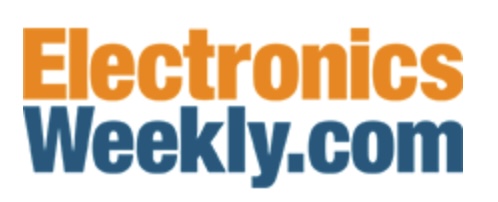The semiconductor market dropped 0.8% in 2Q 2022 versus 1Q 2022, according to WSTS. The 2Q 2022 decline followed a 0.5% quarter-to-quarter decline in 1Q 2022.
The 2Q 2022 revenues of the top 15 semiconductor suppliers match the overall market results, with a 1% decline from 1Q 2022.
The results by company were mixed. Memory suppliers SK Hynix and Micron Technology led with 2Q 2022 revenue growth of 13.6% and 11.0% respectively.
AMD’s revenues were up 11.3% primarily due to its acquisition of Xilinx. The weakest companies were Nvidia with a 19% decline due to weakness in gaming and Intel with a 16.5% decline because of a weak PC market.
![]()
The outlook for 3Q 2022 is also mixed, says SI. The strongest growth is from the companies primarily supplying analog ICs and discretes.
STMicroelectronics has the highest expectations, with its 3Q 2022 revenue guidance a 10.5% increase from 2Q 2022.
ST cited strong overall demand, particularly in the automotive and industrial segments.
Automotive and/or industrial segments were also cited for expected 3Q 2022 revenue growth by Infineon Technologies, NXP Semiconductors, and Analog Devices.
Analog Devices’ revenue was over $3 billion for the first time in 2Q 2022 (primarily due to its acquisition of Maxim Integrated Products last year) and made it on to our list of top semiconductor companies.
Weakness in the PC and smartphone markets were mentioned as major factors in expected 3Q 2022 revenue drops by MediaTek and Texas Instruments.
Nvidia cited continuing weakness in gaming for an expected 12% decline. The largest decline in 3Q 2022 revenue will be from the memory companies.
Micron Technology guided for a 21% decline. Samsung did not provide specific revenue guidance, but Dr. Kye Hyun Kyung, head of Samsung’s semiconductor business, said the second half of 2022 “looks bad.”
![]()
The weakness in the smartphone and PC markets is reflected in recent forecasts from IDC. Smartphone unit shipments are projected to decline 7 percent in 2022 following 6 percent growth in 2021.
Smartphones are expected to return to 5 percent growth in 2023. PCs, which experienced 13% growth in 2020 and 15% growth in 2021 as a result of the COVID-19 pandemic, are forecast to decline 13% in 2022 and 3% in 2023.
Automotive remains healthy, with LMC Automotive projecting light vehicle unit production will increase 6.0% in 2022 and 4.9% in 2023.
The global economic outlook is another factor pointing toward a slowing of the semiconductor market.
Recent forecasts for global GDP growth in 2022 are in the range of 2.7% to 3.2%. The percentage point decline (or deceleration) from 2021 growth ranges from 2.9 points to 3.3 points.
The SI model predicts a 3-percentage point deceleration in GDP growth will result in a 16-point deceleration in semiconductor market growth.
SI’s current forecast of 5% semiconductor growth in 2022 is a 21-point deceleration from 26% growth in 2021. Global GDP is expected to show continued growth deceleration in 2023 of 0.3 to 1.0 points.
However, a global recession is still a possibility. Bloomberg surveys put the probability of a recession in the next 12 months at 48% for the U.S. and 80% for the Eurozone.
![]()
The SI forecast of a 5.0% increase in the semiconductor market in 2022 is the lowest among recent publicly available forecasts.
Other recent projections of 2022 semiconductor market growth range from 6% (Future Horizons) to 13.9% (WSTS).
![]()
The semiconductor market will likely show at least five consecutive quarter-to-quarter declines from 1Q 2022 through 1Q 2023.
If the global economy does not weaken more than current expectations, the semiconductor market should have a modest recovery in the second half of 2023.
However, the quarterly trends will drive the market negative for the year 2023.
The SI forecast is a 6.0% decline in 2023. Future Horizons is the most pessimistic with its August projection of a 22% drop in 2023. Gartner projects a decline in of 2.5%. IDC and WSTS expect growth in 2023, but at a slower rate than 2022: 6.0% for IDC and 4.6% for WSTS.
After 2023, the semiconductor market should stabilize toward typical trends. The COVID-19 related shutdowns and resulting supply chain disruptions will be mostly resolved.
Traditional market drivers smartphones and PCs should be back to normal growth. Emerging applications such as automotive and IoT will become increasingly important as market drivers.
